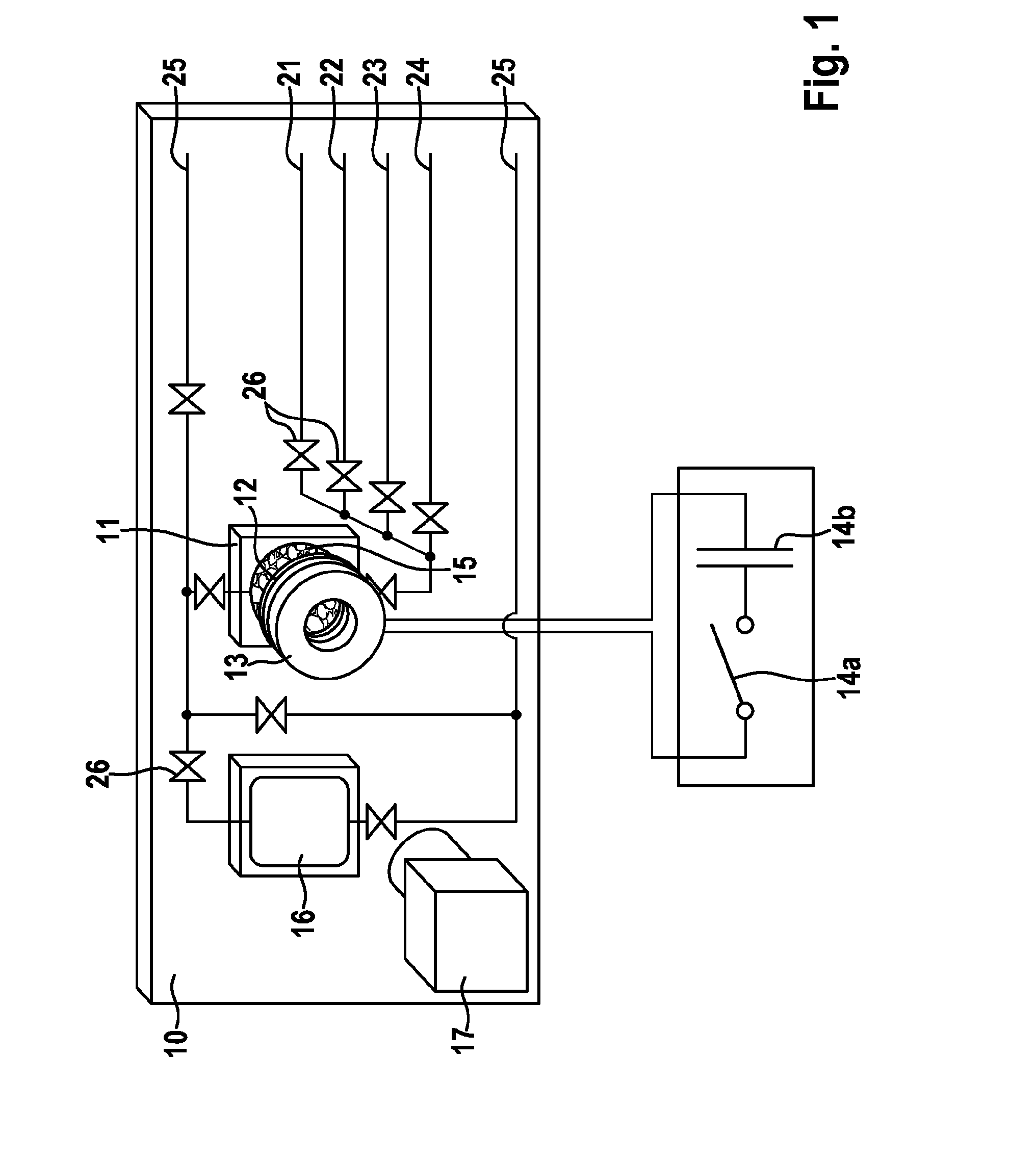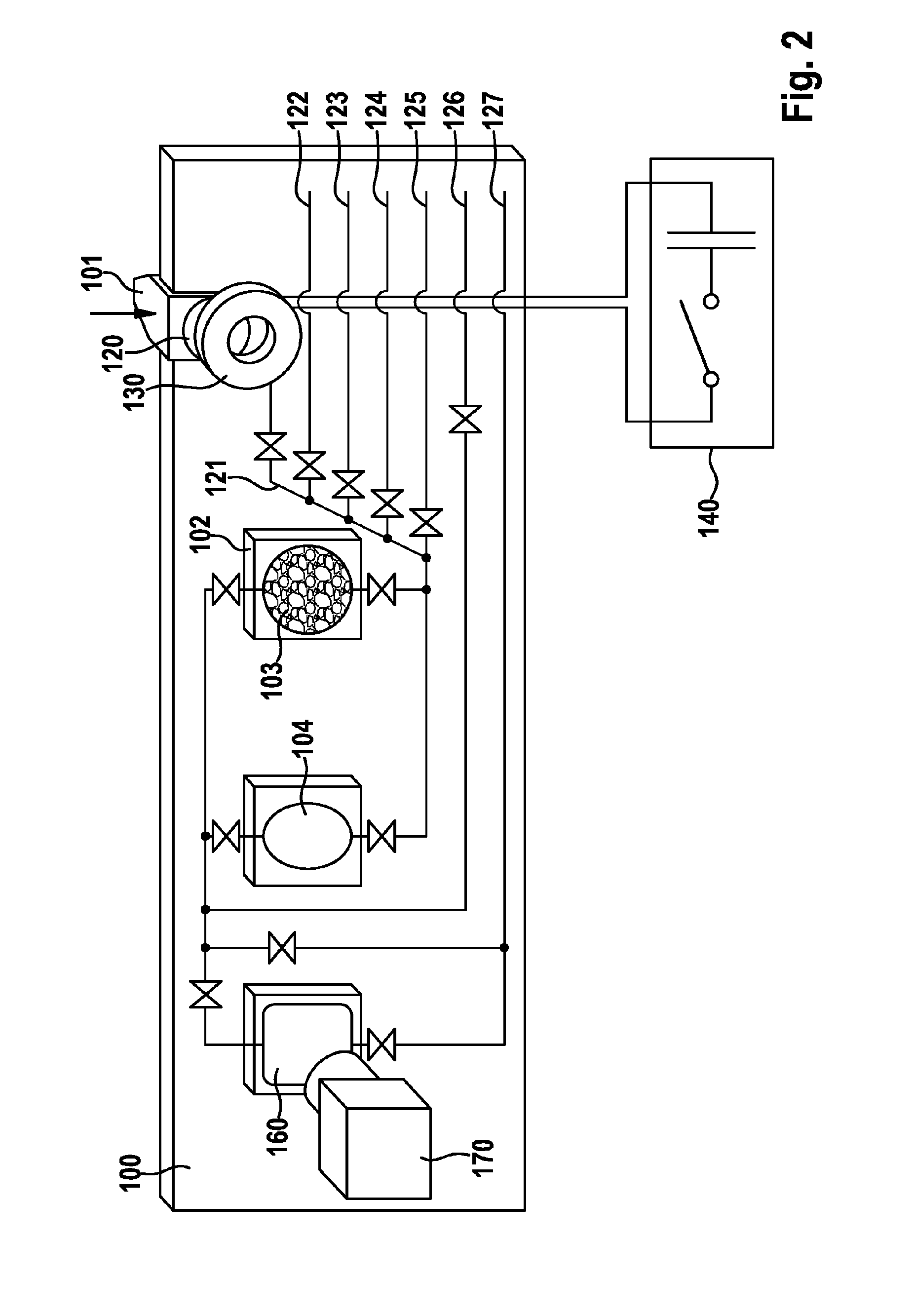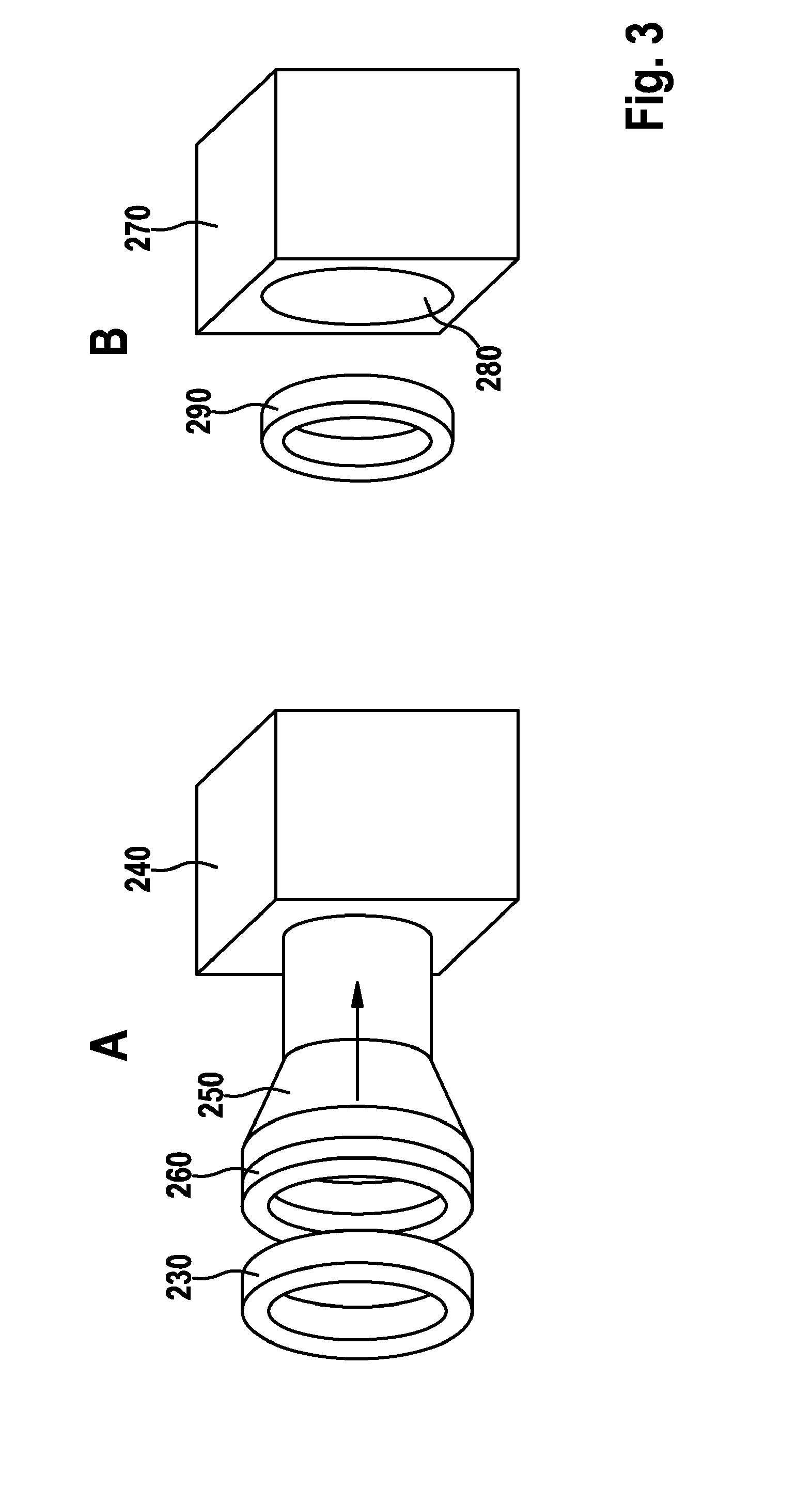Method for Digesting Biological Cells
a biological cell and cell technology, applied in the field of biological and biochemistry, can solve the problems of comparatively high error probability, enzymatic cell disruption is comparatively complex, and the cell membrane of gram-positive bacteria or fungi generally cannot be destroyed to a sufficient extent by high-temperature treatment, etc., to achieve a distinctly lower apparatus expenditure, low wavelength, and high amplitude
- Summary
- Abstract
- Description
- Claims
- Application Information
AI Technical Summary
Benefits of technology
Problems solved by technology
Method used
Image
Examples
Embodiment Construction
[0026]FIG. 1 shows a diagram of an LOC system suited to carrying out the cell disruption according to the invention and to further analysis of the sample. This device is, for example, an injection-molded, polymer LOC inserted into a corresponding operated instrument controlled by, for example, a microprocessor. The LOC can be provided as a disposable article, since, especially for medical applications, this avoids problems related to sterility and to contamination. The LOC 10 comprises a reaction container or reaction compartment 11. The sample containing the cells to be studied is introduced into the container 11. An electrical conductor 12 which, in this embodiment, is in the form of a punched disk composed of electrically conductive material is arranged in the container 11. The electrical conductor should have very good electrical conductivity. A suitable material is, for example, copper, but other metals or alloys can also be used. A coil 13 matching, in terms of its dimensions,...
PUM
| Property | Measurement | Unit |
|---|---|---|
| thickness | aaaaa | aaaaa |
| distance | aaaaa | aaaaa |
| thickness | aaaaa | aaaaa |
Abstract
Description
Claims
Application Information
 Login to View More
Login to View More - R&D
- Intellectual Property
- Life Sciences
- Materials
- Tech Scout
- Unparalleled Data Quality
- Higher Quality Content
- 60% Fewer Hallucinations
Browse by: Latest US Patents, China's latest patents, Technical Efficacy Thesaurus, Application Domain, Technology Topic, Popular Technical Reports.
© 2025 PatSnap. All rights reserved.Legal|Privacy policy|Modern Slavery Act Transparency Statement|Sitemap|About US| Contact US: help@patsnap.com



